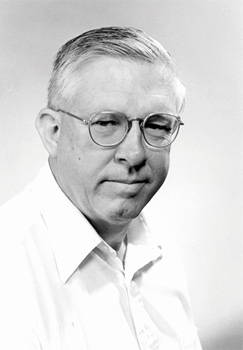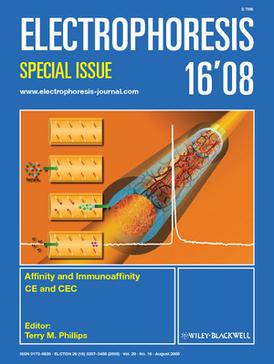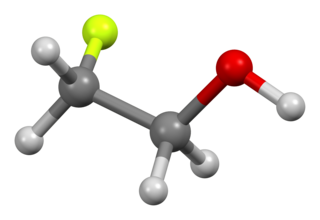
Positron emission tomography (PET) is a functional imaging technique that uses radioactive substances known as radiotracers to visualize and measure changes in metabolic processes, and in other physiological activities including blood flow, regional chemical composition, and absorption. Different tracers are used for various imaging purposes, depending on the target process within the body.

[18F]Fluorodeoxyglucose (INN), or fluorodeoxyglucose F 18, also commonly called fluorodeoxyglucose and abbreviated [18F]FDG, 2-[18F]FDG or FDG, is a radiopharmaceutical, specifically a radiotracer, used in the medical imaging modality positron emission tomography (PET). Chemically, it is 2-deoxy-2-[18F]fluoro-D-glucose, a glucose analog, with the positron-emitting radionuclide fluorine-18 substituted for the normal hydroxyl group at the C-2 position in the glucose molecule.

Crabtree's catalyst is an organoiridium compound with the formula [C8H12IrP(C6H11)3C5H5N]PF6. It is a homogeneous catalyst for hydrogenation and hydrogen-transfer reactions, developed by Robert H. Crabtree. This air stable orange solid is commercially available and known for its directed hydrogenation to give trans stereoselectivity with respective of directing group.

William Wallace Cleland (January 6, 1930 – March 6, 2013, often cited as W. W. Cleland, and known almost universally as "Mo Cleland", was a University of Wisconsin-Madison biochemistry professor. His research was concerned with enzyme reaction mechanism and enzyme kinetics, especially multiple-substrate enzymes. He was elected to the National Academy of Sciences in 1985.

Fluoroiodomethane is the halomethane with the formula FCH2I. Also classified as a fluoroiodocarbon (FIC), it is a colorless liquid. It is a reagent for the introduction of the fluoromethyl (FCH2) group.
NMR in Biomedicine is a monthly peer-reviewed medical journal published since 1988 by John Wiley & Sons. It publishes original full-length papers, rapid communications, and review articles in which magnetic resonance spectroscopy or imaging methods are used to investigate physiological, biochemical, biophysical, or medical problems. The current editor-in-chief is John R. Griffiths.
X-Ray Spectrometry is a bimonthly peer-reviewed scientific journal established in 1972 and published by John Wiley & Sons. It covers the theory and application of X-ray spectrometry. The current editor-in-chiefs are Johan Boman and Liqiang Luo.

The American Journal of Bioethics is a monthly peer-reviewed academic journal published by Taylor & Francis, covering all aspects of bioethics. It publishes target articles, open peer commentaries, editorials, book reviews, and case studies and commentaries in clinical care and research ethics. The journal also publishes special issues that address timely ethical challenges. The editor-in-chief is David Magnus, who was also one of the journals founders.

Electrophoresis is a peer-reviewed scientific journal covering all aspects of electrophoresis, including new or improved analytical and preparative methods, development of theory, and innovative applications of electrophoretic methods in the study of proteins, nucleic acids, and other compounds.

2-Fluoroethanol is the organic compound with the formula CH2FCH2OH. This colorless liquid is one of the simplest stable fluorinated alcohols. It was once used as a pesticide. The related difluoro- and trifluoroethanols are far less dangerous.
Biological Chemistry is a peer-reviewed scientific journal focusing on biological chemistry. The journal is published by Walter de Gruyter and the current editor-in-chief is Bernhard Brüne.
Drug Research is a peer-reviewed medical journal covering drug development published by Thieme Medical Publishers. The journal was established in 1951 and the editor-in-chief is Martin Wehling.

JNJ-26990990 is a broad-spectrum anticonvulsant drug currently under development by Janssen Pharmaceutica as a second-generation follow-up to the marketed drug topiramate. It was designed to have the same anticonvulsant effects as topiramate, but without the side effects associated with topiramate's carbonic anhydrase inhibition. It also has potential use in the treatment of inflammatory pain, neuropathic pain, and depression.

Mefway is a serotonin 5-HT1A receptor antagonist used in medical research, usually in the form of mefway (18F) as a positron emission tomography (PET) radiotracer.

DPA-714 or N,N-diethyl-2-[4-(2-fluoroethoxy)phenyl]-5,7-dimethylpyrazolo[1,5-a]pyrimidine-3-acetamide is a selective ligand for the translocator protein (TSPO) currently under evaluation for several clinical applications. For this reason, a practical, multigram synthetic route for its preparation has been described.

PipISB is a drug used in scientific research which acts as a potent and selective inverse agonist of the cannabinoid receptor CB1. It is highly selective for the CB1 receptor over CB2, with a Kd at CB1 of 1.5nM vs over 7000nM at CB2, has good blood–brain barrier penetration, and can be conveniently radiolabelled with either 11C or 18F, making it useful for mapping the distribution of CB1 receptors in the brain.
The Journal of Medical Virology is a monthly peer-reviewed medical journal covering fundamental and applied research concerning viruses which affect humans. It is published by Wiley-Blackwell and was established in 1977. The current editor-in-chief is Shou-Jiang (SJ) Gao.
Metabolic trapping refers to a localization mechanism of synthesized radiocompounds in the human body. It can be defined as the intracellular accumulation of a radioactive tracer based on the relative metabolic activity of the body's tissues. It is a basic principle of the design of radiopharmaceuticals as metabolic probes for functional studies or tumor location.

Bioanalysis is a biweekly peer-reviewed scientific journal established in 2009 and published by Future Science. The editor-in-chief is Neil Spooner. The journal covers the field of bioanalysis, including drug and metabolite assays, chromatography and separation sciences, ligand binding assays, metabolomics, and key detection methods.
Fluorodeoxyglycosylamine is a product of fluorodeoxyglucose and biological amines. The Maillard reaction of sugars and amines results in the formation of glycosylamines and Amadori products that are of biological significance, for drug delivery, role in central nervous system, and other potential applications.













